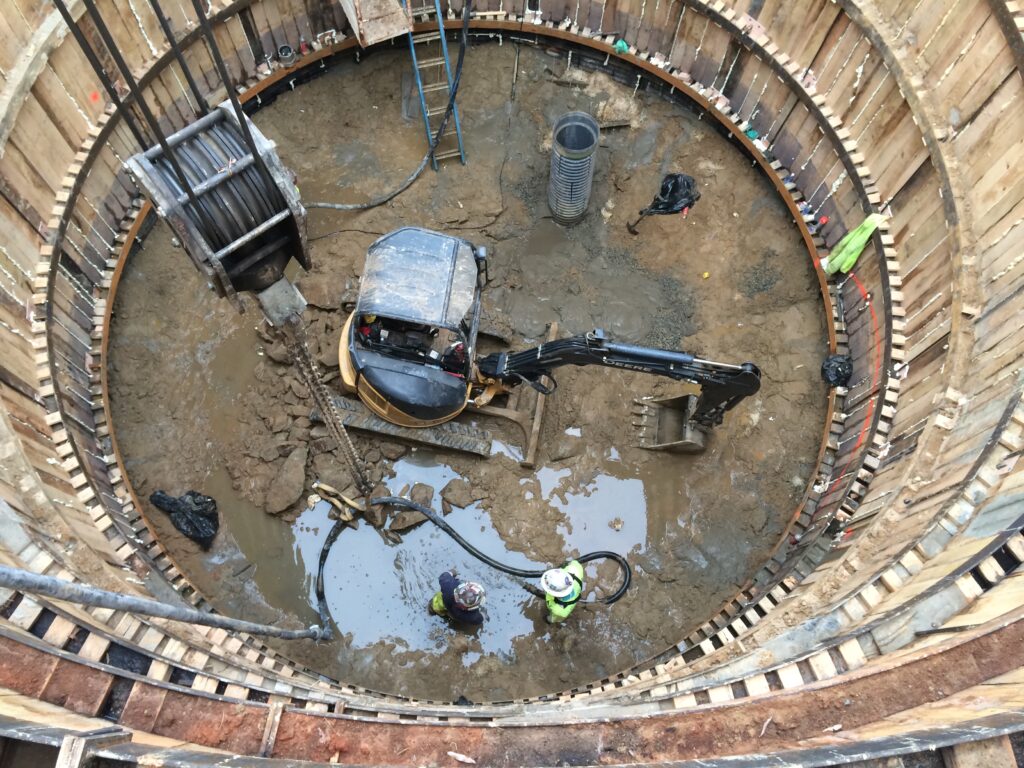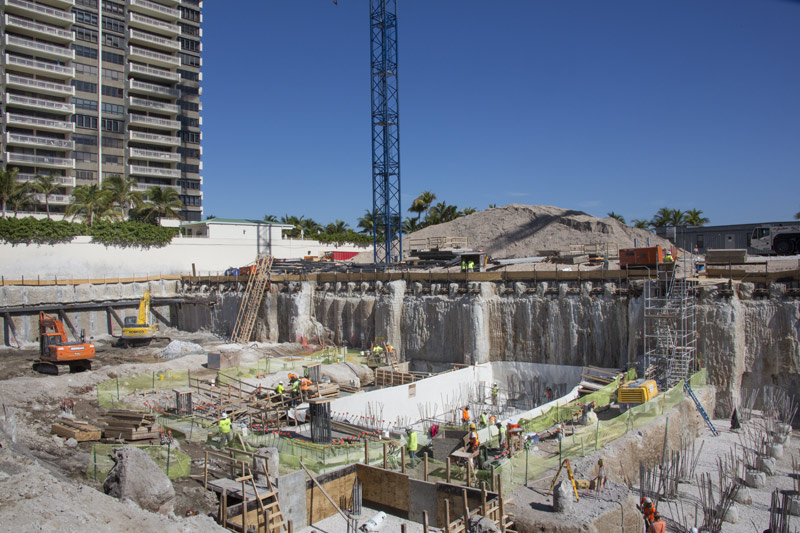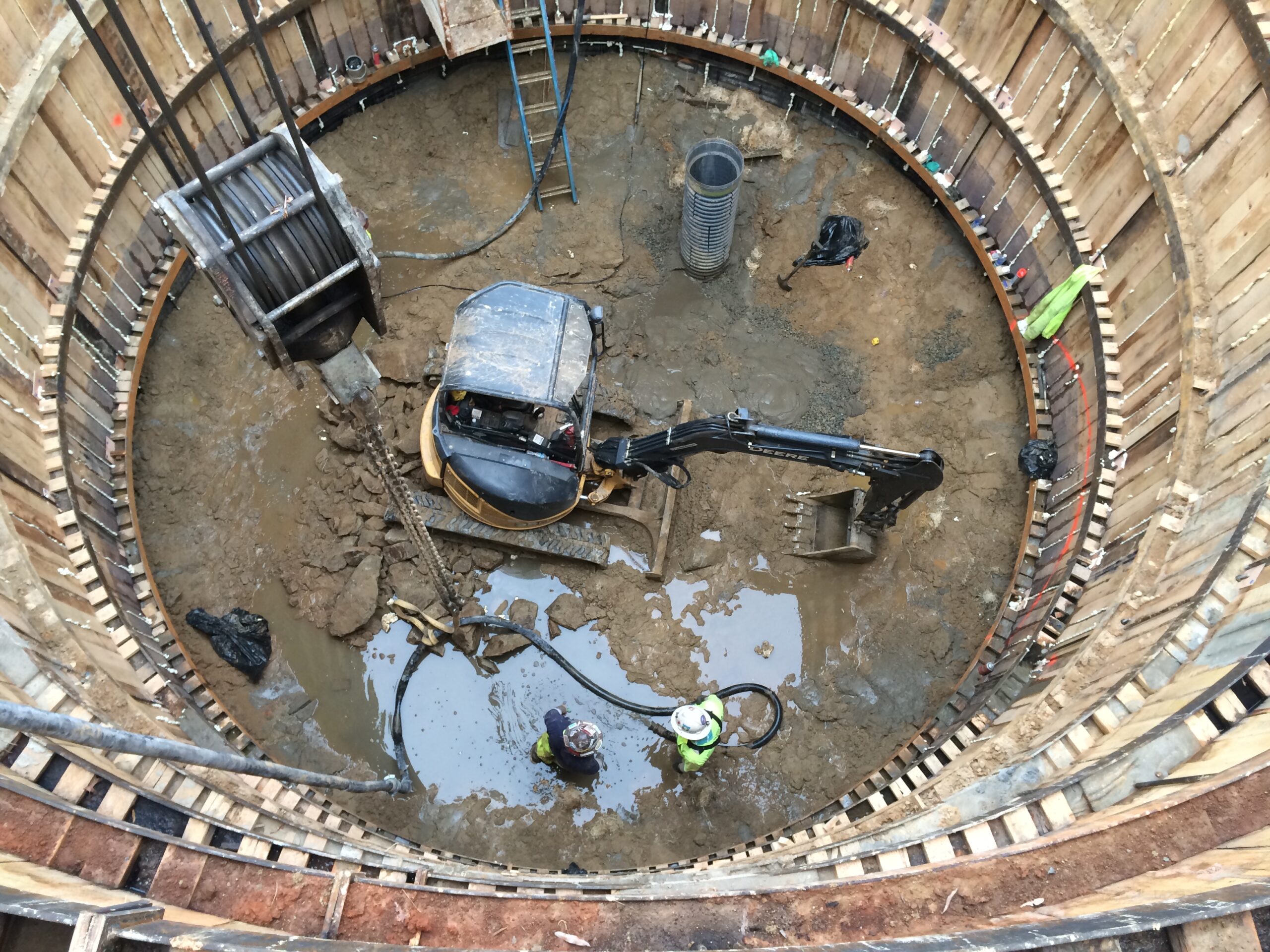When working with sites that involve cuts, slopes, or grade separations, one of the most important design elements is the earth retention system. These systems hold back soil to create usable space, protect structures, or maintain stability during construction. There is no single solution that fits every project. Each system has its own strengths, limitations, and ideal applications depending on soil conditions, groundwater, and construction constraints.

1. Soldier Pile and Lagging Walls
This is one of the most widely used systems for temporary and permanent support. Steel H-piles are installed vertically at regular intervals, and timber or precast concrete lagging is placed between the piles as excavation proceeds.
Advantages: Simple, quick to install, and adaptable to variable conditions.
Best for: Urban excavations, basements, and cut-and-cover projects where groundwater is manageable.
2. Sheet Pile Walls
Steel sheet piles interlock to form a continuous barrier that is driven into the ground using vibratory or impact hammers.
Advantages: Excellent for tight access areas and where groundwater control is critical. Can serve as both a retaining wall and a cutoff wall.
Best for: Marine bulkheads, cofferdams, and excavations below the water table.
3. Secant and Tangent Pile Walls
These systems use overlapping (secant) or touching (tangent) drilled shafts to form a continuous wall. Reinforced “primary” and “secondary” piles create both structural support and groundwater cutoff capability.
Advantages: Ideal for deep excavations in difficult ground or near existing structures.
Best for: Urban deep basements, below-grade parking, and sites with high groundwater pressure.
4. Soil Nail Walls
Soil nails are installed by drilling and grouting steel bars into the retained soil mass, then covering the face with shotcrete or cast-in-place concrete.
Advantages: Cost-effective and fast to build with small equipment. Works well for staged excavation.
Best for: Temporary cuts, roadway widenings, and hillside stabilization.
5. Mechanically Stabilized Earth (MSE) Walls
MSE walls combine compacted backfill with layers of steel or geosynthetic reinforcement, typically faced with precast concrete panels or modular blocks.
Advantages: Efficient for taller walls, reliable performance, and flexible aesthetics.
Best for: Highway embankments, bridge abutments, and retaining structures where space is available behind the wall.
6. Anchored Walls
Anchors (tiebacks or ground anchors) are often added to soldier pile, sheet pile, or secant walls to resist larger lateral loads.
Advantages: Allows for taller excavations without large structural sections.
Best for: Deep excavations, permanent walls, or when right-of-way is limited behind the wall.
7. Cantilevered and Gravity Walls
These include conventional cast-in-place concrete or modular gravity block walls that resist soil pressure through their own mass and geometry.
Advantages: Simple, durable, and low maintenance when properly designed.
Best for: Permanent grade separations and smaller retaining applications.

Garbin Geo’s Approach
At Garbin GeoStructural Group, we take a practical, performance-based approach to earth retention design. Every project starts with understanding the subsurface, because soil behavior ultimately drives wall performance. We evaluate multiple system types side by side, considering constructability, site access, groundwater, and long-term durability. Our goal is always to deliver the most efficient and reliable solution for the conditions at hand, whether that means a simple cantilevered wall or a fully anchored soldier pile system.
We have designed and reviewed hundreds of retaining systems across the United States, including highway embankments, waterfront bulkheads, and deep basement excavations in dense urban settings. Each project reinforces the same lesson: the best design is not only structurally sound but also buildable and cost-effective for both the contractor and the owner.
Need expert support for your next excavation or retaining wall project? Contact Garbin GeoStructural Group for practical, performance-driven earth retention design.
